
Do you have a question about the 3Com 3CRBSG2893 - Baseline Smart 28PORT Gig Sfp 10/100/1000 and is the answer not in the manual?
| Switching Capacity | 56 Gbps |
|---|---|
| Forwarding Rate | 41.7 Mpps |
| MAC Address Table Size | 8K |
| Jumbo Frame Support | 9K Bytes |
| Switch Type | Managed |
| Power Supply | Internal |
| Ports | 24 x 10/100/1000BASE-T ports, 4 x SFP |
| Management | Web-based, SNMP |
| Features | VLAN, QoS, Port Mirroring |
| Dimensions (W x D x H) | 440 x 44 mm |
| Weight | 3.2 kg |
Describes the environment for web-based network management operations.
Details on accessing the device via its web interface, including default credentials.
Procedure for safely exiting the web interface session and saving configurations.
Overview of the web interface structure: navigation tree, title area, and body area.
Defines different access levels (Visitor, Monitor, Configure, Management) for web users.
Details the various network management functions available through the web interface.
Guide to initiating CLI configuration, including essential prerequisites and steps.
Instructions for preparing the console connection and terminal emulation software.
Steps for authenticating and accessing the Command Line Interface using username and password.
Overview of available commands for device management via the Command Line Interface.
Introduction to the configuration wizard's purpose and guidance.
Steps to configure fundamental network parameters using the wizard.
Navigation path to access the initial page of the configuration wizard.
Setting essential system parameters like name, location, and contact information.
Steps to assign an IP address to the VLAN interface for device management access.
Reviewing and confirming the configurations completed by the setup wizard.
Introduction to Intelligent Resilient Framework (IRF) for stacking network devices.
Explains the concept of a stack as a management domain with master and slave devices.
Procedure for creating a stack, configuring master device, and defining stack ports.
Tasks required for setting up an IRF stack, including global parameters and ports.
Setting global parameters for the IRF stack, such as private IP and build stack options.
Enabling or disabling ports to be used as stack ports for IRF communication.
Viewing the topological layout and member status of the IRF stack.
Viewing individual device details and interface layouts within the IRF stack.
Accessing slave device interfaces from the master device for management.
Introduction to Spanning Tree Protocols (STP, RSTP, MSTP) and their evolution.
Explanation of STP's role in eliminating network loops and preventing duplicate packets.
Details on Bridge Protocol Data Units (BPDUs) used in STP for topology calculation.
Defines key STP terms like Root Bridge, Root Port, Designated Bridge, and Designated Port.
Introduction to aggregating multiple physical ports into a single logical link.
Defines aggregate interfaces, aggregation groups, and member port states.
Explains static and dynamic aggregation modes, including LACP.
Introduction to Link Layer Discovery Protocol (LLDP) for device discovery and topology mapping.
Explains LLDPDUs, TLVs, and LLDPDU encapsulation formats (Ethernet II, SNAP).
Details the different operating modes (TxRx, Tx, Rx, Disable) for LLDP ports.
Tasks for enabling LLDP globally and on ports, and configuring settings.
Introduction to IGMP snooping for managing multicast groups on Layer 2 devices.
Explains how IGMP snooping maps ports to multicast addresses and forwards data.
Defines router ports and member ports in the context of IGMP snooping.
Steps for enabling IGMP snooping globally and within VLANs, and configuring port functions.
Introduction to routing functions on switches and the role of routing tables.
Explanation of routing table entries: origin, destination, mask, next hop, and interface.
Manual configuration of static routes for network traffic management and performance.
Configuration of a default route for packets with no matching entry in the routing table.
Explanation of DHCP's role in automating IP address assignment and network configuration.
Mechanisms for IP address allocation: manual, automatic, and dynamic (lease).
Step-by-step process of how a DHCP client obtains an IP address from a server.
How DHCP clients request to extend their IP address lease duration.
Explains how DHCP relay agents solve subnet limitations for DHCP communication.
Describes the typical setup for DHCP relay agent functionality.
Overview of DHCP relay agent operation and its benefits.
Key tasks for configuring DHCP relay agents: enabling, server groups, and interface setup.
Introduction to DHCP snooping as a security feature for managing DHCP traffic.
Details DHCP snooping's capabilities: IP-to-MAC mapping and ensuring authorized DHCP servers.
How DHCP snooping records client IP-to-MAC bindings from DHCP messages.
Configuring trusted/untrusted ports to enforce client IP address acquisition from authorized servers.
Introduction to diagnostic tools for examining network connectivity and device reachability.
Function to check device reachability and examine network connectivity using ICMP echo requests.
Utility to display Layer 3 devices in packet delivery path for network failure identification.
How to perform ping and trace route operations using the web interface.
Introduction to Address Resolution Protocol (ARP) for IP to MAC address translation.
Explains ARP's role in translating IP addresses to Ethernet MAC addresses for data transmission.
Describes the structure of ARP request and reply messages.
Details the process of ARP address resolution between hosts on the same or different subnets.
Tasks for displaying and managing ARP entries, including creating static entries.
Feature to forward only ARP packets from authorized clients, preventing man-in-the-middle attacks.
Explains ARP detection's role in preventing MITM attacks by validating ARP packets.
Description of MITM attacks resulting from ARP spoofing and how they are facilitated.
Introduction to the 802.1X protocol for port-based access control on wired and wireless LANs.
Explains the three entities in 802.1X: Client, Device (Authenticator), and Server (RADIUS).
Describes how EAP exchanges authentication information between client, device, and server.
Defines controlled/uncontrolled ports, authorized/unauthorized states, and control direction.
Introduction to AAA (Authentication, Authorization, Accounting) for network security management.
Explains the AAA client/server model and its three security functions.
Defines ISP domains for user grouping and distinguishing user attributes.
Tasks for configuring AAA, including prerequisites, ISP domains, and authentication/authorization methods.
Introduction to RADIUS protocol for AAA services and its client/server model.
Details RADIUS's distributed information protocol, UDP usage, and extended access methods.
Explains the roles of NAS (client) and RADIUS server, including their databases.
How RADIUS ensures security via shared keys, password encryption, and multiple authentication methods.
Module for configuring local users and user groups on the device.
Steps for creating and managing local user accounts and their attributes.
Detailed guide on creating local user entries with username, password, and service types.
Managing user attributes centrally by creating and configuring user groups.
Introduction to Public Key Infrastructure (PKI) for information security and identity verification.
Definitions of key PKI terms: Digital Certificate, CRL, and CA Policy.
Explains the PKI system components: entities, CA, RA, and PKI repository.
Describes the process of requesting and verifying digital certificates.
Introduction to port isolation for Layer 2 traffic separation within VLANs.
Steps to configure port isolation, assigning ports to an isolation group.
Function to associate ACLs with Telnet/HTTP services to filter client requests.
Steps to associate IPv4 ACLs with Telnet and HTTP services for access control.
Introduction to Access Control Lists (ACLs) for packet filtering and network security.
Classification of IPv4 ACLs (Basic, Advanced, Ethernet Frame Header) by ACL number.
Defines how packets are matched against ACL rules: config vs. auto (depth-first) order.
Tasks for configuring ACLs, including time ranges and creating IPv4 ACLs.
Explanation of Quality of Service (QoS) for meeting customer network needs and evaluating performance.
Describes best-effort service where packets are treated equally without performance guarantees.
Discusses special requirements for bandwidth, delay, and jitter for modern network applications.
Analysis of network congestion causes, negative impacts, and effective countermeasures.
Setting queue scheduling modes (SP, WRR) for ports to manage traffic during congestion.
Introduction to Power over Ethernet (PoE) for supplying power to devices via Ethernet cables.
Highlights the benefits of PoE: reliability, ease of connection, standardization, and broad application.
Describes the components of a PoE system: PoE power, PSE, PI, and PD.
Prerequisites and basic steps for configuring PoE functionality on the device.
Steps to enable/disable PoE, set power state, max power, and priority for individual ports.
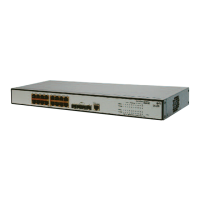


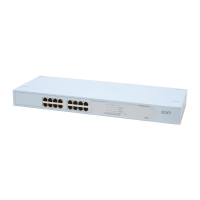
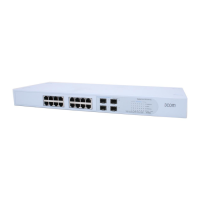
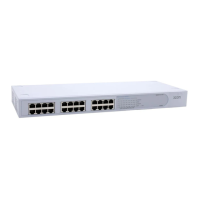
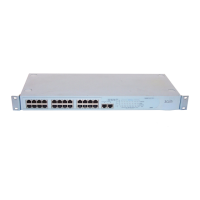
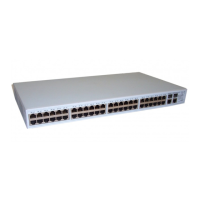
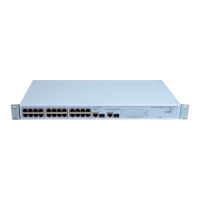


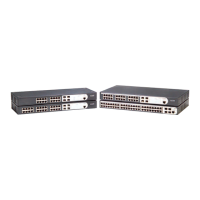
